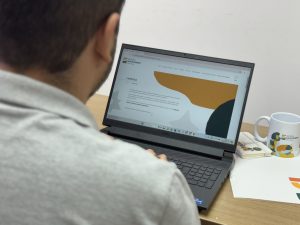Neonatal screening tests aim to diagnose congenital diseases and prevent complications in newborns. The theme inspires the Purple June campaign, in which celebrates Heel Prick Test Day. Specialists from the Santos Dumont Institute (ISD) warn that there are four other procedures that contribute to the identification of diseases with the potential to trigger physical and cognitive dysfunctions in babies: the Heart Prick Test, the Eye Prick Test, the Ear Prick Test and the Tongue Prick Test.
“There are many diseases that we can diagnose, and then prevent complications that are most often serious, related to neuropsychomotor development, and that will have repercussions in the future on the child's learning and development”, explains the pediatric preceptor at ISD, Sabrinna Machado.
According to the doctor, time is the biggest challenge in detecting these conditions, which are not evident at birth. It is recommended that the five neonatal screening tests be performed in the maternity ward: the Heel Prick Test after 48 hours of birth; the Heart Prick Test on the first day of life; and the Ear, Tongue and Eye Tests before discharge or, preferably, in the first 30 days of life.
The Heel Prick Test, for example, detects diseases that appear before the first month. “If we could collect data between the second and fifth day of the baby’s life, with a positive diagnosis before 30 days, we could already start treatment and avoid neurological complications or even fetal deaths,” he emphasizes.
Among the four endocrine diseases that the test can detect, two require treatment to begin between 14 and 21 days of the child's life. Another disease is Phenylketonuria, which can cause intellectual deficit and severe epilepsy if the child is not diagnosed early and starts on an appropriate diet.
The pediatrician mentions the case of a child who arrived at the ISD at one year and eight months with developmental delays. She had congenital hypothyroidism, a condition that had not been detected until then because the Heel Prick Test had not been performed. Treatment began late and today the child has an intellectual deficit, in addition to motor, cognitive and language impairments.
To avoid stories like this, professionals encourage mothers to actively seek out all neonatal screening tests, without forgetting to collect the results and present them to the doctor. If the baby presents any significant changes, he/she may be referred for appropriate treatment, mitigating any compromises to his/her health and development.
At Anita, the Institute's unit where high-risk prenatal and neonatal care is provided, eligible patients have access to all the necessary exams to ensure the best possible development of their children.
This was the case of Winaiara Taiane, who was referred by a health center in Macaíba to receive prenatal care at ISD. She was unaware of the importance of neonatal screening, but insisted on undergoing all the tests when her son Anthony was born.
“I thought it was simple, until the pediatrician said, ‘Mommy, we think it’s simple, but here we detect several diseases.’ He also had his ears and tongue checked, everything was fine, and thank God nothing happened,” celebrates the mother of the boy, who is now four months old.
Know the five tests
Heel Prick Test: Performed in the public health system, the test screens for six diseases: hemoglobinopathies, biotinidase deficiency, cystic fibrosis, congenital hypothyroidism, congenital adrenal hyperplasia and phenylketonuria. These diseases cause delays in the neuropsychomotor development of children and their early detection prevents deaths, neurological sequelae and other complications.
The test is performed by collecting blood from the baby, which can be taken from the heel or any other site (arm, hand, etc.).
The Little Heart Test: assesses the saturation of babies in the upper and lower limbs with the help of a pulse oximeter. It detects serious congenital heart diseases, prevents early discharge and allows specialized investigation and evaluation in the first days of life.
The Eye Test: It is done through analysis of the retinal reflection and serves as a screening for congenital eye diseases such as retinoblastoma, congenital cataract and glaucoma, allowing early treatment and avoiding or minimizing visual loss.
The Ear Test: It is done with the baby sleeping and lasts 10 minutes. If there is any change, the child will be monitored by a specialized team for investigation and treatment, minimizing complications of hearing loss.
The Tongue Test: is an observational test that evaluates the lingual frenulum. The test makes it possible to diagnose and treat ankyloglossia, known as “tongue-tie”, allowing for improved latch-on during breastfeeding and preventing changes in the child’s speech and eating.
Where to seek help
For changes to the Heel Prick Test:
- If Sickle Cell Disease or other hemoglobinopathy is detected – Hemonorte.
- If Cystic Fibrosis is detected – UASCA / HUOL – 3342-5203/3342-5216
- Other endocrinological changes – Police Hospital – 98866-9907
- Questions – LACEN/RN – 3234-6197
For changes to the Hearing Test:
- Patients from Macaíba and the Seventh Health Region of RN – CEPS Anita Garibaldi
- Patients from Natal or regulated – SUVAG and Otomed.
Carrying out the Tongue Test:
- Patients from Macaíba – CEPS Anita Garibaldi
- State reference – Varela Santiago Children’s Hospital/CREFIRN
- Frenectomy – IIN-ELS (patients up to 3 months of age)
- Varela Santiago Children's Hospital/CREFIRN (patients from Natal or referred by regulation)













